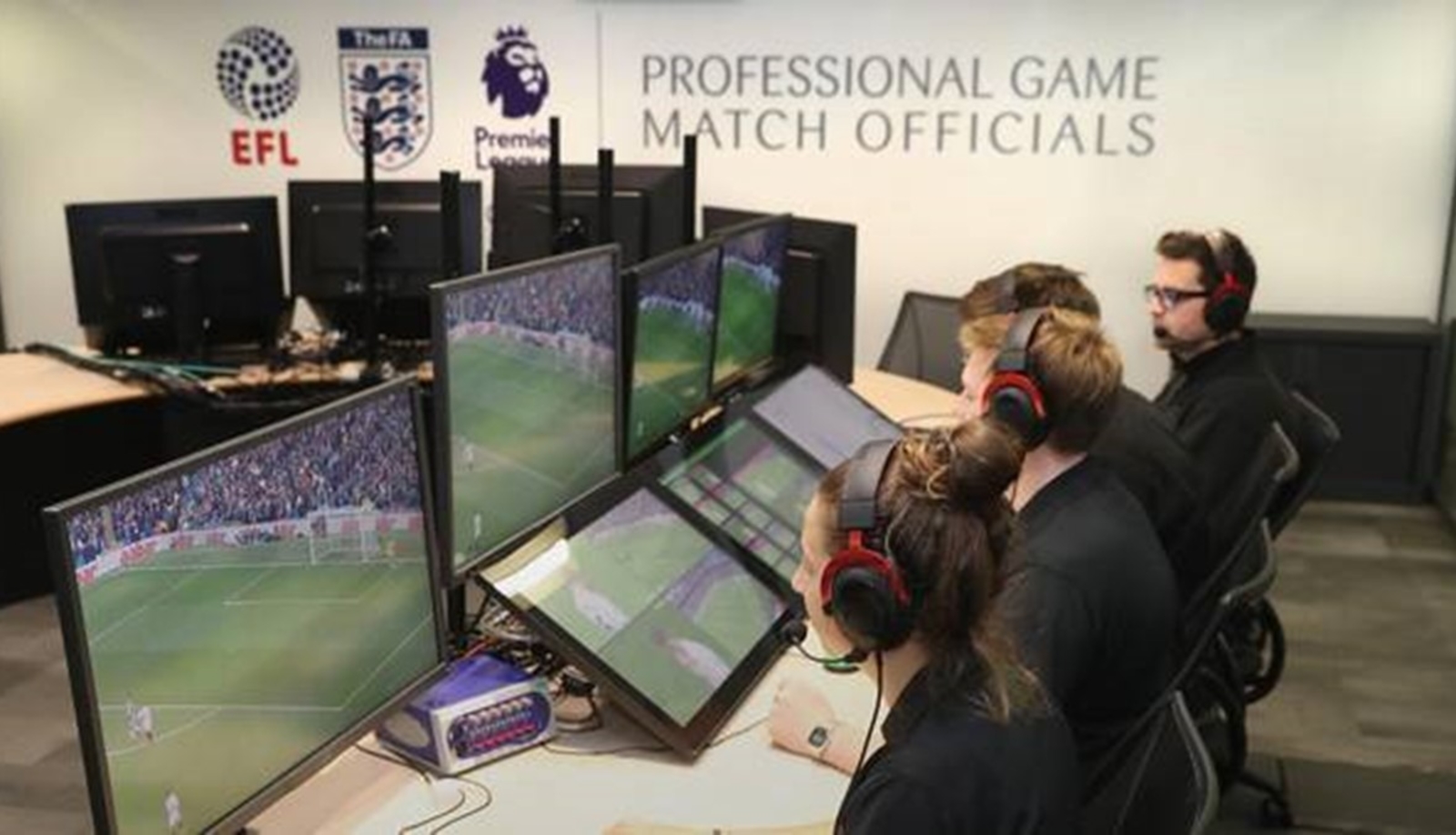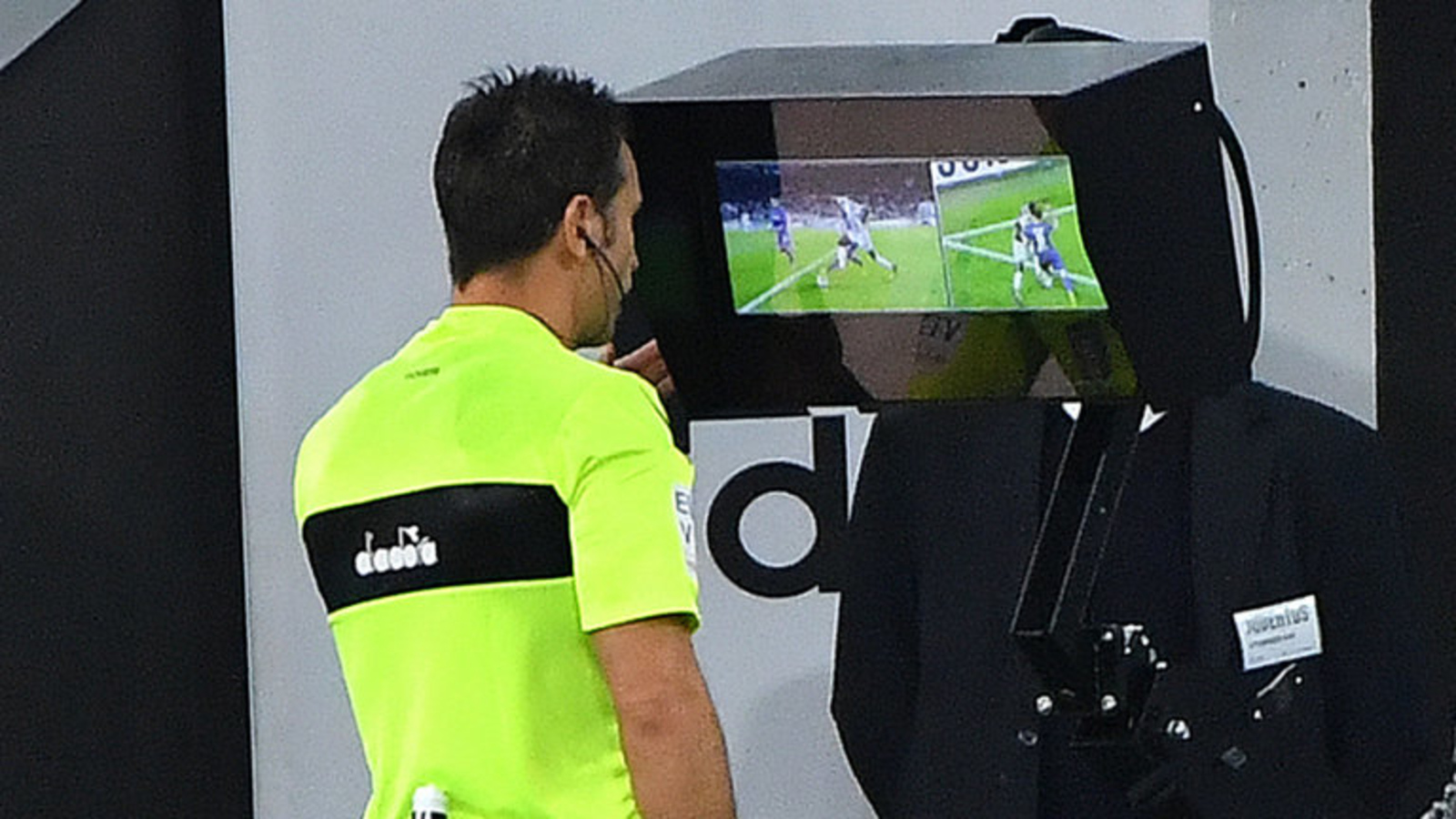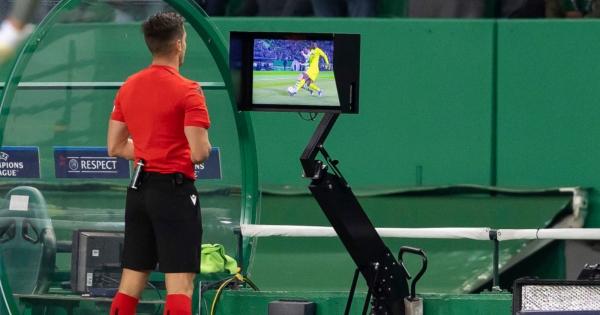Continuing our detailed explanation of the video assistant referee technology, we will continue in the fifth episode by explaining the procedures performed by the video referee, which are the last two stages, i.e. review and final decision.
Review
A referee may initiate a clear and obvious potential error or significant incident of absence when:
VAR or one of the other judges recommends reconsideration.
The judge suspected that something important had been overlooked.
If play is stopped at this point, the referee delays the resumption of play.
If play is not stopped at this point, the referee stops play when the ball reaches the neutral ground or zone, usually when neither team is attacking, and shows a television signal.
The video assistant referee describes what can be seen in the TV replay, and the referee after that:
Going to the referees area to watch TV replays – viewing on the field Before making a final decision, other referees will not watch TV replays, except in exceptional cases when the referee asks them to do so.
or
Makes the final decision based on the understanding of the personal judge, information from the VAR and, if necessary, information from other judges – only view the VAR.
At the end of the case, the judge must show a television signal, followed immediately by the final decision.
For subjective decisions such as the severity of a competitive foul, offside interference, handball considerations, on-field review is appropriate.
For real decisions such as location of the foul or offside player, point of contact (handball or foul), location (inside or outside the penalty area), ball out of play, etc. – the view of the field can be used for real decisions if they will help manage the players or the match, or promote a decision, such as a critical decision made at the end of a game.
The referee may request different camera angles or replay speeds, but as a general rule, slow replays should only be used for incidents such as the location of the foul or player, point of contact for a physical foul, handball, ball out of field. play (including goal or not). Normal speed must be used to assess the severity of an infringement or to determine if it is a handball infraction.
For decisions or situations involving goals, penalties or not, and red cards to block a scoring opportunity, it may be necessary to analyze the stages of attack that led directly to the decision or situation: this may include how the attacking team controlled the ball in open play .

The law on football does not allow changing appeals, corner kicks. Throw-ins, etc., if the game is restarted, cannot be reviewed.
If play is stopped and restarted, only the referee can initiate a review and apply the appropriate disciplinary sanction for misidentification or possible misconduct-related dismissal. Spitting, biting, or overly aggressive, degrading, or offensive behavior.
Verification procedures should be performed as efficiently as possible, but the accuracy of the final solution is more important than speed. For this reason, and because some cases are complex and involve many decisions or cases that may be subject to review, there is no maximum time limit for review.

final decision
When the review procedure is completed, the referee must show the TV signal and explain his final decision.
The referee will then accept, modify or waive any disciplinary sanction, where appropriate, and restart play in accordance with the Football Law.
Source: El Iktisad
